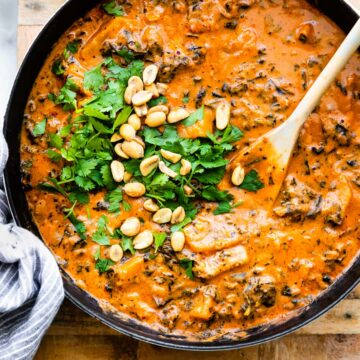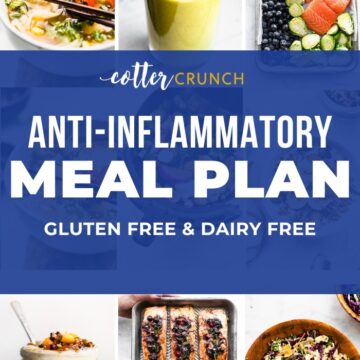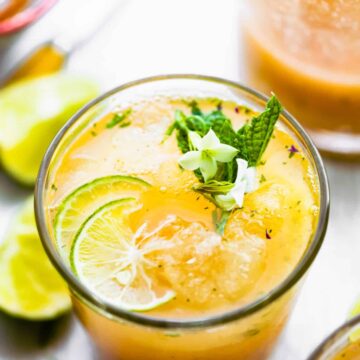*This resource center is meant to be an overview and is not a comprehensive guide to implementing the Anti-Inflammatory diet. It is not intended for use as medical advice. For a more thorough guide, take a look here.
What Is It?
The anti-inflammatory diet is an elimination diet that aims to reduce or prevent chronic inflammation and related symptoms such as aches and pains, allergies, autoimmune conditions, cardiovascular disease, diabetes, and respiratory issues by focusing on consuming whole, nutrient-dense foods.
How the Anti-Inflammatory Diet Works
While inflammation in the body can be useful in short bursts, when experienced over a long period of time, it can cause adverse side effects such as cardiovascular disease, cancer, type 2 diabetes, and more (Source). Many factors such as body weight, stress levels, and environmental toxins play a role in our body’s inflammatory response, and food is no exception. Therefore, it is important to manage our diets and remove highly processed and fried foods that are high in salt, sugar, and saturated fats and replace them with nutritious whole food ingredients. As a result, our bodies are better equipped to fight inflammation.
Who Can Benefit from an Anti-Inflammatory Diet?
Anyone who suffers from inflammation or inflammation-related symptoms consumes a large amount of processed foods, or is predisposed to health conditions associated with inflammation within the body may find an anti-inflammatory diet beneficial.
How to Implement an Anti-Inflammatory Diet
I don’t recommend totally overhauling your diet overnight and tossing out all the foods you consume on a daily basis. This won’t be sustainable! Instead, start small, making simple swaps one at a time. For instance, if you use highly processed vegetable oils in your cooking, try replacing them with better options such as refined avocado oil, coconut oil, or avocado oil. Or, replace one fast food meal a week with a home-cooked meal prep option instead. Build on these habits week after week until you have eliminated inflammatory foods from your diet!
Foods to Limit/Not Include
- Processed Meats: sausage, deli meat
- Dairy: yogurt, milk, cheese
- Refined Sugars: white flour, evaporated cane juice, corn syrup, fructose, etc.
- Trans Fats: found in fried foods and fast foods
- Processed Snack Foods: chips, crackers, cookies, etc.
- Gluten: bread, pasta
- Vegetable Oils: soybean, corn, peanut
- Alcohol: beer, liquor, wine
Foods to Consume
- Vegetables: a wide variety of fresh vegetables including dark, leafy greens, broccoli, cauliflower, Brussel sprouts*
- Fruit: whole fruit (not juice), especially berries and cherries
- Fish: salmon, trout, sardines, mackerel
- Herbs & Spices: turmeric, ginger, basil, oregano, thyme, cinnamon
- Nuts & Seeds: walnuts, cashews, almonds, pistachios, pine nuts, chia seeds, hemp seeds
- Whole Grains: brown rice, amaranth, buckwheat, quinoa
- Beans & Legumes: black beans, lentils, chickpeas, black eye peas
- Oils: Unrefined or refined avocado oil, coconut oil
*Nightshades: In general, nightshades can be included in an anti-inflammatory diet in moderation. However, you know your body best. So, if you feel you do not tolerate them well, swap them out for alternative vegetables!
What to Eat
Anti-Inflammatory Breakfasts
Anti-Inflammatory Lunches/Dinners
Anti-Inflammatory Snacks
Find a full meal plan here!
Helpful Resources
Websites
Informational Books
- The Inflammation Spectrum: Find Your Food Triggers and Reset Your System
- Body on Fire: How Inflammation Triggers Chronic Illness and the Tools We Have to Fight It
- Whole: Rethinking the Science of Nutrition
Cookbooks
- The Complete Anti-Inflammatory Diet for Beginners
- The Anti-Inflammatory Diet & Action Plans
- Meals That Heal
Sources:













Rate & Comment